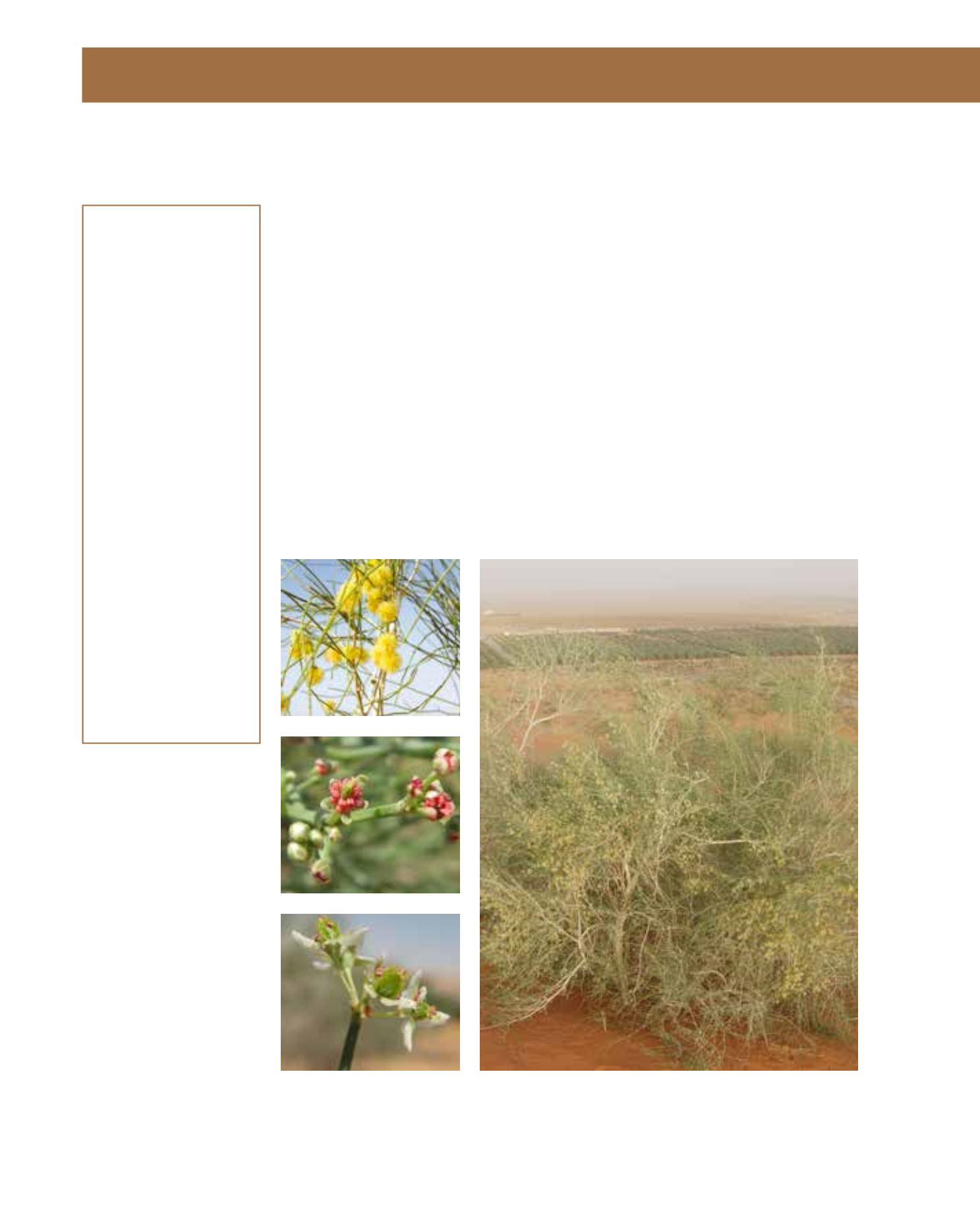

GENERAL
Origin
:
sub-tropical
Vigour
:
fast growing
Humidity
:
very arid, semi-
arid
Propagation :
direct sowing,
sowing and
pricking out,
cuttings
Maintenance :
low
CONDITIONS
Urban climate :
vulnerable
Dessication :
resistant
Stagnant water :
vulnerable
Irrigation
:
none
Salinity/ppm :
very high (5500
ppm)
Hardiness
:
-3°C
SHAPE
Type
:
shrub
Height
:
2 m-3 m
Spread
:
2 m-5 m
Foliage
:
evergreen
FLOWER
Colour
:
yellow, white
Size
:
0.8 cm
Period
:
February - April
Smell
:
sweet
FRUIT
Type of fruit :
nutlet
Fruit size
:
1.3 cm
An almost leafless, evergreen shrub with many stiff, upright branches, this plant is widespread
in the desert and arid zones of Saudi Arabia, where it is known in Arabic as abal or arta. It is
characteristic of deep sand, has a very long tap root reaching down to the water table and helps
to stabilise the surrounding dunes. It is often seen growing in a hummock with the sand colle-
cted around it: it also occurs in plains and wadis, and is cultivated around desert plantations as a
windbreak. Its abundant, yellowish-white flowers appearing in spring are not only attractive, but
also edible and have a sweet scent. Relatively high, its fragile twigs are slender, the leaves tiny and
the pretty, red, oval fruit is covered with hairy spines. It is fast-growing on sandy and gravelly
soils and rock, and is very hardy with a high salt tolerance. Important for grazing, it is browsed
by camels. It features frequently in the folk medicine of the desert owing to its food value, high
in sugar and nitrogen. It is used for gastric, ophthalmic and stomach problems, as well as for hair
scenting and dying; the dried leaves and stems are used to treat toothache. Propagation is by seed
or cuttings. The vertical structure of C. comosum is extremely interesting for landscape schemes,
although with age the plant tends to fall over and become untidy. It is a useful plant for sand dune
stabilisation, hedges, massed planting and in the foreline of afforestation. Maintenance is low, and
in extensive landscape schemes the plant will look after itself.
77
Calligonum comosum,
Polygonaceae
Calligonum,
abal, arta
















